Bullet Journaling: Helping Maintain Mindfulness and Self-care
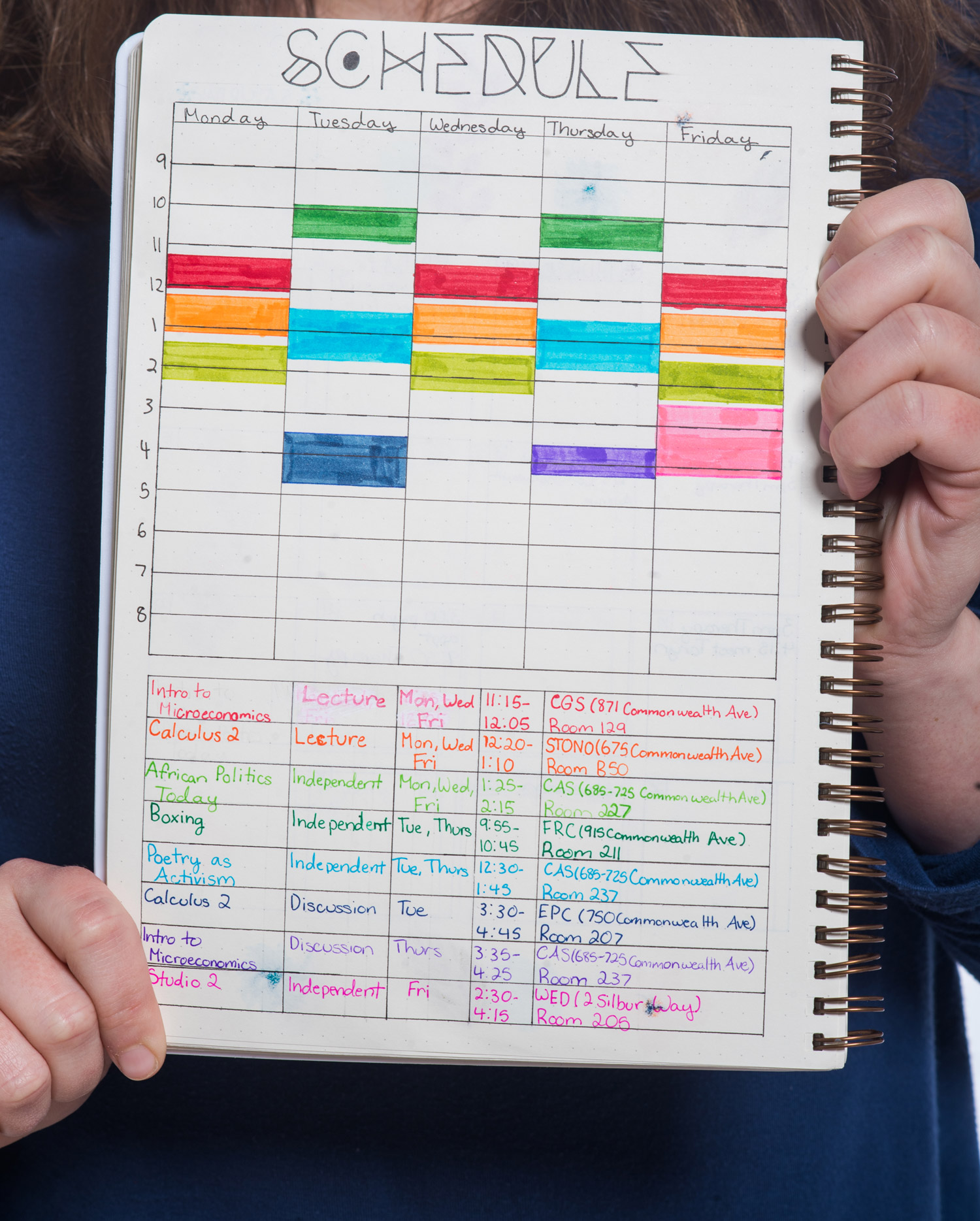
BU Today asked six BU students who practice Bullet Journaling to tell us what they like about it. Photo by Cydney Scott
Bullet Journaling: Helping Maintain Mindfulness and Self-care
Students talk about the benefits, including creativity and reducing stress
In this time of unprecedented worry and uncertainty, it helps to have something constant and therapeutic in your life. So if you have an endless flow of tasks, commitments, and reminders bogging you down, or if you’re looking to become more mindful, keeping a Bullet Journal©, which has been described as equal parts day planner, diary, and written meditation, may be for you.
These aesthetically pleasing blank notebooks, turned into works of art, have become popular on Instagram and Pinterest during the last decade.
Although they may seem daunting to re-create, the original Bullet Journaling method is pretty simple. Founder Ryder Carroll, the author of The Bullet Journal Method, writes in his book that it is “a mindfulness practice” and productivity system, allowing you to “declutter your mind and organize your thoughts using pen and paper.” His system uses calendars, indexes, daily and monthly logs, and a daily evaluation of what is important and what can be “migrated” to the next month to make you as productive as possible.
Bullet Journaling has taken off on social media, and BuJo users (yes, they have a nickname) have taken Carroll’s minimalist method and made it their own. Now there are countless YouTubers who share their Bullet Journaling processes, some incorporating his method and some who’ve created completely new ways to do it.
Read about how these six BU students practice Bullet Journaling.
Abbey McCracken (Sargent’20)
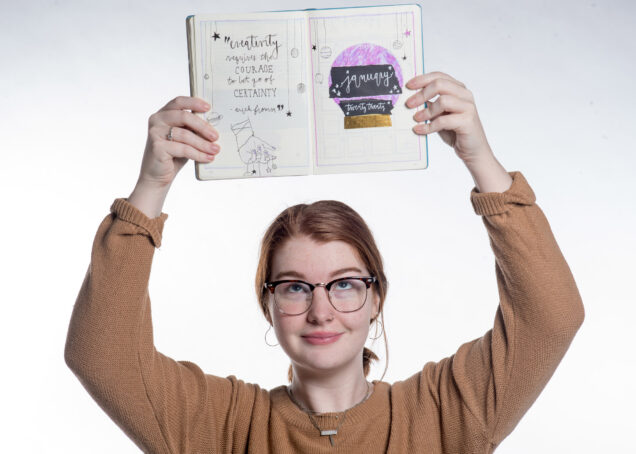
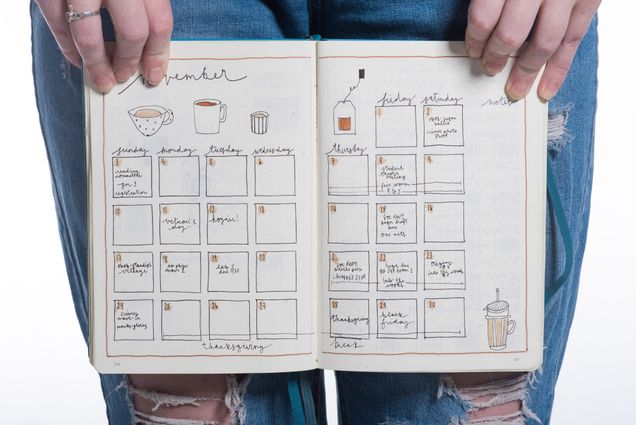
Photos by Cydney Scott
Why she started a Bullet Journal:
McCracken started a Bullet Journal her freshman year of college after seeing the journals on Instagram. “I’ve always been super into using a planner, but I started dabbling in it because it was a way to channel my creativity, but also stay organized,” she says. “It has held me more accountable.”
Why she likes Bullet Journaling:
Bullet Journaling helps her stay organized, is therapeutic, and gives her an artistic outlet. She likes how the journal forces her to put a list down on paper, so she can cross things out and see what she has achieved in a week.
How she describes her personal Bullet Journaling style:
It’s a mix between an art journal, a planner, and a scrapbook.
Her advice for prospective Bullet Journalists:
“It’s a great outlet for anyone who’s artsy, but also wants to stay on top of their game both academically and professionally and in their personal life,” McCracken says. “I think anyone can benefit from it, and it doesn’t have to be super artsy for everyone. It can be as minimalistic or as artsy as meets your personal taste.”
Sofia Marcelli (CAS’23)
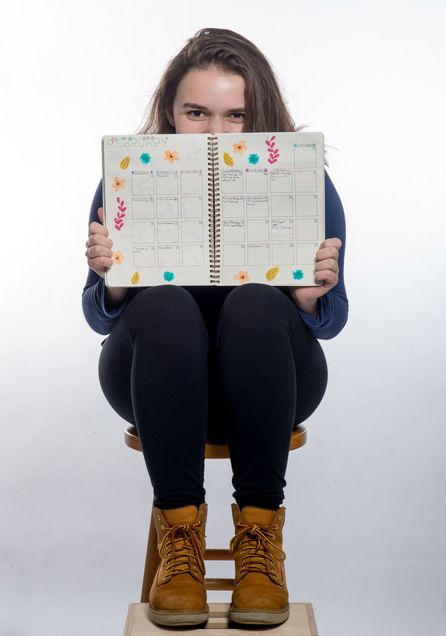
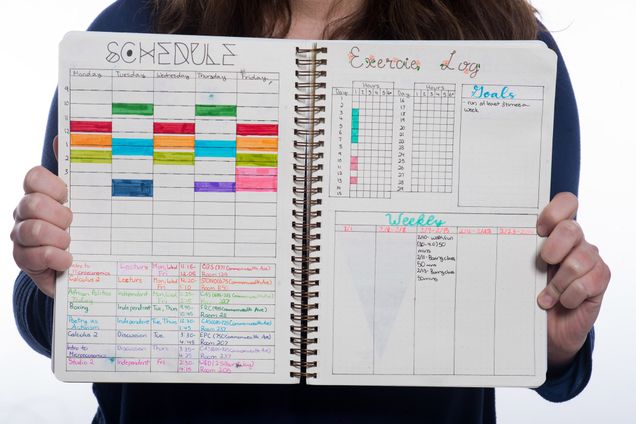
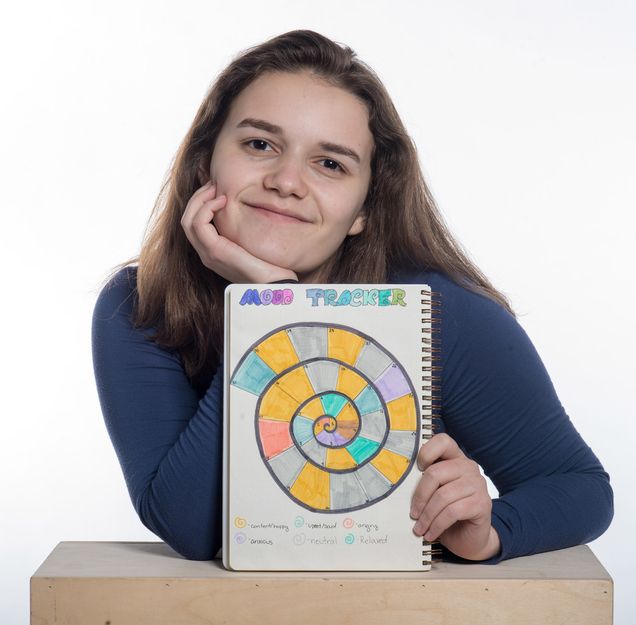
Photos by Cydney Scott
How often she Bullet Journals:
Marcelli has been Bullet Journaling for six months. She creates layouts at least three times a week, but writes tasks in it daily.
Why she likes Bullet Journaling:
She enjoys art and drawing, yet big projects can take a long time to finish. Bullet Journaling allows her to use her art skills, and is a good way to stay organized. “It helps me de-stress and relax after a really long day,” she says.
Her personal Bullet Journaling style:
It changes from month to month. “Some months are minimalistic, and some are filled with colors,” Marcelli says. “This month in particular I’m doing a flower theme so it’s pretty everywhere. Last month was really glittery.” She said the strangest theme she ever did was a light theme “with lamps and lights everywhere.”
Emma Cohen (COM’23)
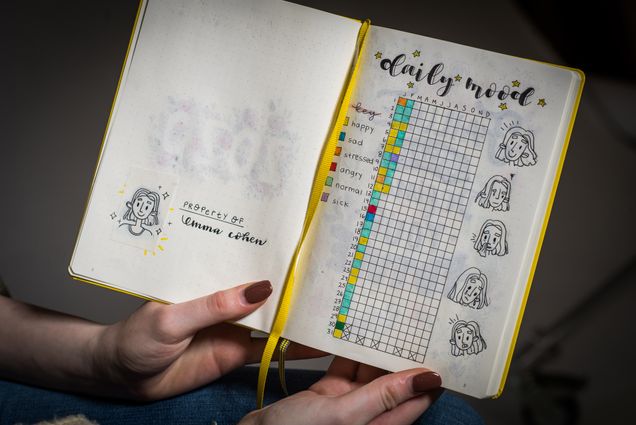
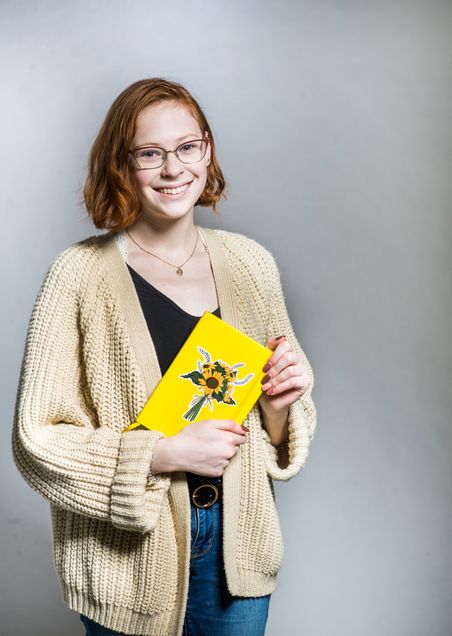
Photos by Jackie Ricciardi
Purpose of Bullet Journaling:
Unlike many BuJo users, Cohen doesn’t actually use her journal for planning. “I do all my planning on my computer,” she says. “I use my Bullet Journal for tracking happiness and gratitude and things like that. It’s more of a relaxing thing.”
Things she tracks:
Her daily mood on a grid with symbolic colors (yellow=happy).
How long she’s been Bullet Journaling:
Cohen has kept her Bullet Journals since she was a high school freshman. “At the end of the year I can look back and see trends in how the school year starts out,” she says. “It’s good to remind myself that it starts off stressful, but it looks like it gets better.”
Mary Baldino (Questrom’23)

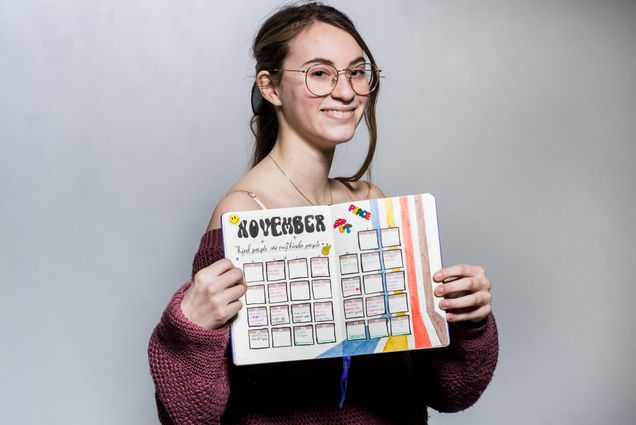
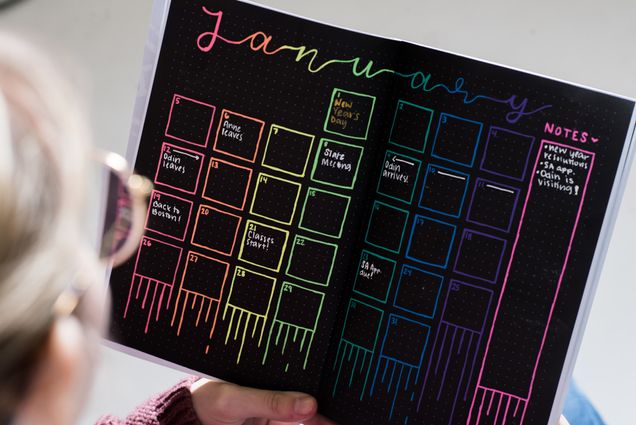
Photos by Jackie Ricciardi
How long she’s been Bullet Journaling:
She’s been doing it for two years.
Why she Bullet Journals:
“It’s a creative outlet for me, and it also holds me to using it because I am a very forgetful person. I used to bounce back and forth between planners. I could never stick with one—I’d use it for a week and then give up,” Baldino says. “But if I’m spending the time to create these spreads and these layouts that are customized to what I need them to be,” that makes her stick with them.
How she describes her personal Bullet Journaling style:
“I would characterize my style as fairly eclectic,” she says. “Whatever strikes me that month as a theme, I kind of go with it.” She recently did a “retro ’70s theme” and a “candy overload” theme for monthly calendar spreads. She also dabbles in “mixed-medium journaling,” which is using traditional art supplies, as well as different pieces of paper, washi tape, lace, and other products for decorating.
Why she got into Bullet Journaling:
Bullet Journaling is also a social outlet, Baldino says. “My best friend back home started doing it actually, around the time that I started seeing it on my Instagram and Pinterest. She thought it was a lot of fun and it was a way that the two of us were able to become closer, because it became an activity we would do together,” she says. “We would pool all of our supplies on one table and just do our thing.”
Why she finds Bullet Journaling so useful at BU:
Baldino originally had two Bullet Journals—one for school-related things, one for her personal life—but it was too much to keep track of, she says, “especially at a school like BU where you’re so involved.” Now everything goes in the same place so nothing gets forgotten.
Kimmie Zak (CFA’20, CAS’20)
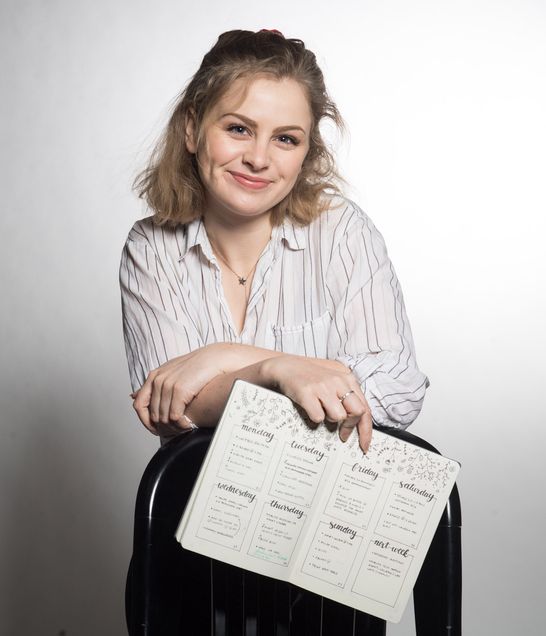
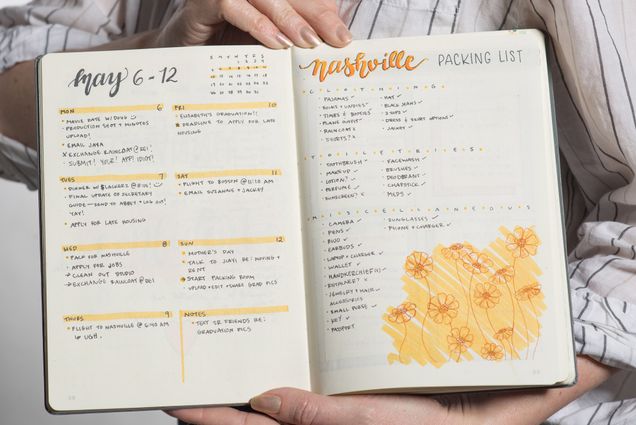
Photos by Cydney Scott
Why she likes to Bullet Journal:
Zak says she was never able to use premade planners. Bullet Journaling “is kind of a way to slow down and do something that I enjoy doing. It’s a break from all the stress.”
Her personal Bullet Journal style:
Colorful and artistic, she says. “Some people will choose one set format for every week or every month,” she says. “I just like to do what keeps me productive or what I’m feeling. This year I’m trying to make it a little more streamlined so I can cut down a little on the time I spend setting it up for every month or every week.”
Why she started:
“Before I started using a Bullet Journal, I used a pre-laid-out planner, and I could never get myself into the habit of using it, so it would just be blank and I would just memorize my whole to-do list,” Zak says. “By my senior year of high school, I had so many things to remember that that just wasn’t possible any more.”
Her advice for potential Bullet Journalists:
“With practice anyone can do it. My first few journals were not beautiful or perfect by any means, but you just keep practicing and it gets better,” Zak says. “People always say to me, ‘Oh my gosh, I could never do that,’ which is something that they say a lot about art, too. There’s no right or wrong way to Bullet Journal. You don’t have to have perfect calligraphy, fancy pens, or a fancy notebook. You just enjoy it and you can do it.”
Vanessa Chien (Questrom’19)
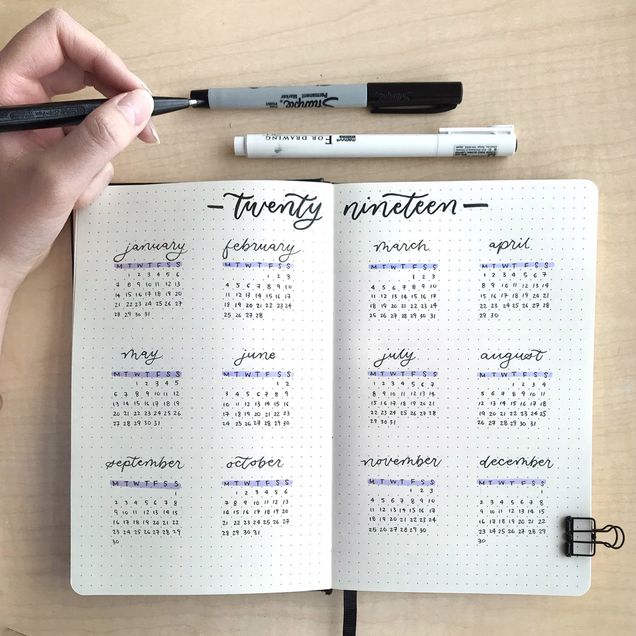
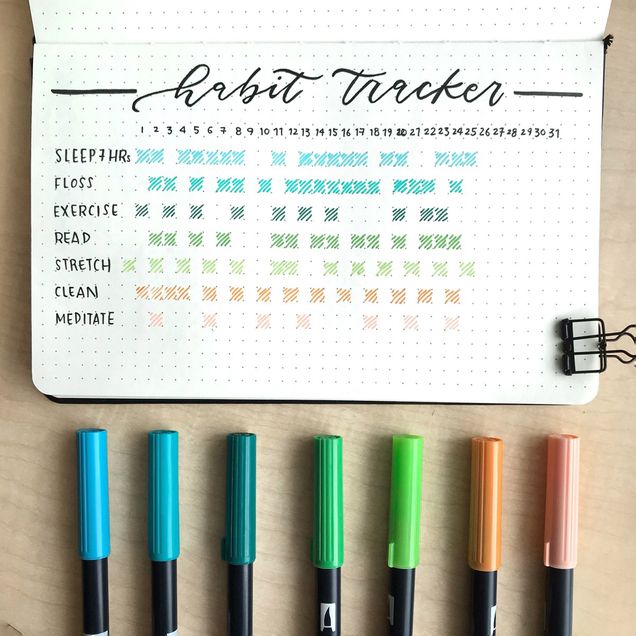
Photos courtesy of Vanessa Chien
Why she began Bullet Journaling:
Although Chien doesn’t practice traditional Bullet Journaling, she uses a semi-premade journal and Bullet Journaling methods in it. She now works in account management, but while she was at BU, she worked with companies like Sweetgreen in “lettering” their in-store chalkboard menus and other signs. “When I picked up lettering freshman year, I kind of started Bullet Journaling without realizing it, because the community on Instagram surrounding Bullet Journaling, planning, and lettering overlap really heavily,” she says. “A lot of times that line isn’t very clear. You could be doing both at the same time and not know the exact separation between the two.”
What does she think is the role of intentionality and mindfulness in Bullet Journaling:
“I’m a very anxious person, and when there are a lot of responsibilities on your shoulders, I think planning and journaling and writing things down can help me pace myself,” Chien says. “It can really slow me down and break things down into steps.”
She also says that the online mental health and Bullet Journaling communities overlap significantly. “It is something I really like about the movement. It’s a very simple way to ground yourself and to improve your mental state. It definitely helps me relax and take things step-by-step, because I can get very easily overwhelmed,” she says. “So it’s kind of my own coping mechanism.”
Comments & Discussion
Boston University moderates comments to facilitate an informed, substantive, civil conversation. Abusive, profane, self-promotional, misleading, incoherent or off-topic comments will be rejected. Moderators are staffed during regular business hours (EST) and can only accept comments written in English. Statistics or facts must include a citation or a link to the citation.